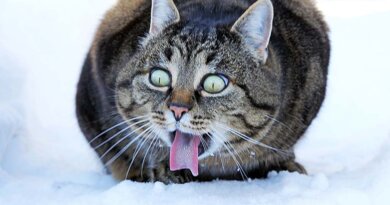Seasonal Depression in Pets and People
Seasonal Depression in Pets and people makes it harder for them to enjoy some seasons, and it is being experienced across the country.
When beach weather ends, and it’s time to get that hot coffee and warm blanket. Some pets and people like this kind of weather. It’s cozy, right?
However, many pets and people battle mental illnesses like depression or Seasonal Affective Disorder and have a hard time coping with the weather.
This article will look at this condition and guide you on many ways to boost your mind and body.
What is Seasonal Depression in Pets and People?
Seasonal Depression or Seasonal Affective Disorder (SAD) is where depression or mood shifts happen from changes in the season. As the temperatures lower, so does their serotonin levels. It can also change their mood.
In humans, Seasonal Affective Disorder is a type of depression connected to the shift in seasons.
The exact cause of this illness is still unsure, but research suggests that it can be caused by changes in sunlight, sleep patterns, and a change in melatonin levels.
According to Mental Health America, close to 5% of Americans experience the seasonal affective disorder in a given year. But unfortunately, not only humans can have this mental illness.
Turns out that even our pets can suffer from this illness. Humans and dogs share a lot of brain chemistry.
This includes the hormones melatonin and serotonin. When we have less daylight, the brain produces more melatonin and less serotonin. These changes can hurt our mood.
Battling with depression in the middle of the pandemic is like a “Double-Kill” when you’re already struggling.
Always take care of your mental health, not just in these tough seasons. And if you’re not the one experiencing it, try and reach out to your friends and families.
Check-in with the people you care about. This can help their moods too.
Seasonal Affective Disorder in Pets State-by-State
CertaPet investigated wherein the U.S. residents and their pets suffer from seasonal depression.
Using Google Trends to search terms like “seasonal depression, “seasonal affective disorder,” and “dog depression” during the cold months of October 2020 through March 2021.
They have also looked into the National Oceanic & Atmospheric Administration (NOAA) to know which states experience the most intense cold temperatures and the lowest sunlight during this season.
And the winner is… the state of Hawaii, with a score of 40.68 out of 50. Second place goes to Missouri with 39.54% and Florida in third place with 39.53%.
The US average percentage of the time between sunrise and sunset that sunshine reaches the ground during winter is 49.3%. But in Hawaii, it is 65%, which is significantly above average.
In the winter, the average temperature in Hawaii is 67.4 degrees. The average temperature in the U.S. in the winter season is 32.2 degrees!
Unfortunately, Minnesota, Ohio, and Alaska are the states that are more likely to be prone to seasonal depression. Can you imagine the temperature in Alaska in winter? It’s about 2.6 degrees, and its average percentage of sunshine during this season is only 34%!
It’s also worth noticing that the search volume for the term “seasonal affective disorder” was 88, which is high compared to other states.
Moreover, Ohio holds the highest search volume for the keyword “seasonal depression” in all 50 states.
Ohio’s average percentage of sunshine during the winter season is only 36% and its average temperature during this season is 29.5 degrees.
The Connection between The Percentage of Sunshine During Winter and Google Searches of “Seasonal Depression”
With this, we can specify the connection between the portion of sunshine to the search volume of the keyword “seasonal depression” on state-by-state grounds.
From the chart above, we see that the people in Ohio are experiencing seasonal depression the most, then Michigan, Maryland, Vermont, and Alaska.
On the other hand, sunny states like Arizona, California, and Nevada are less likely to experience seasonal affective disorder.
Seasonal Depression in Pets Signs
Even though there is not much research available about seasonal affective disorder in pets, experts and some pet owners think their pets are affected similarly by the factors above.
For instance, if you see your pet be more lethargic and sleepy once the winter comes in, it can mean that there’s a shift in melatonin levels.
Due to the shift in season, the shorter daytime hours can cause an increase in melatonin. This is a significant factor for humans experiencing SAD. A few common symptoms of SAD in pets are:
- Lethargy
- Loss of appetite
- Overgrooming
- Excessive vocalizing
- Significant increase in sleeping
Seasonal Affective Disorder in Pets Treatments
Treatment or ways to ease seasonal depression in people and pets can be the same for humans. It can help boost both of your spirits during winter.
Here are a few things you can do that experts recommend for preventing seasonal affective disorder. This is like hitting two birds with one stone types of activities as you can benefit from it.
Get some sunshine!
Since one of the leading causes of SAD is that melatonin production increases when you’re not getting enough light, sunshine is the obvious solution.
Open the blinds and turn on some lamps. Or, if you have the budget for it, there are now Light Therapy Lamps! An example of this is the Verilux HappyLight which costs about $38.95 on Amazon.
Go for a Walk Outside
Even though it’s freezing outside, getting outside and having a 30-minute walk with your dog is not a bad idea. This can boost their spirits and can be a way of exercising.
However, don’t forget to bundle up to protect your dog’s feet from snow and ice. You can buy them sweaters, jackets, snowsuits, boots, and even heating pads to make sure that they stay warm.
Spend Time With your Pet
It’s harder to manage stress when it’s winter. So if you’re swamped at work or have a hard time cuddling up with your pet, it would be best to plan a scheduled vacation.
It’s essential to spend time with your dogs instead of rushing from work or other errands. It’ll make you and your dog feel worn out.
Plan a family trip with your pet. I’m sure that they’ll enjoy this as much as you do.
Seasonal Affective Disorder for Humans Tips for Prevention
There are now plenty of ways to boost your mental health or ways to prevent Seasonal Affective Disorder. Two of my favorite examples are Exercising and Getting back to Nature.
Start with exercising or staying physically active to prevent seasonal depression in people and pets. Getting back to nature helps me a lot through tough times.
Something about the fresh air and calm environment helps me relax and find my happy or safe space.
Luckily for you, these are not as different from the examples above! Here are a few ways to boost your mental health:
1. Find Sunshine
Sunlight has a very positive effect not just on our mental health but also on our well-being. Spend some time outside in the sun to boost serotonin production.
This will also help your body get vitamin D which will help you be in a good mood.
2. Be Productive
Instead of sleeping all day, try to be productive during the day. Productivity doesn’t necessarily work or study.
Try to clean your room, or even try reading a book. Get back to your hobbies or passion or even engage yourself in activities you have never tried before.
A few examples would be:
Reading or Writing – Read a book once in a while or start writing a journal. Try painting or drawing and boost that creative mind of yours.
Learn to play instruments – In my personal experience, when I feel a little bit down, I try to focus on my music and play guitar.
Gardening – Spending your time gardening will not only develop a new hobby but will also get you the sunlight that you need.
Here is an excellent article about indoor gardening: Indoor Gardening: Expert Tips
3. Talk to a friend or family
Get in touch with your friends or family. Try and catch up with them. Ask them out to lunch or maybe a coffee run. Enjoy and laugh with them; reconnecting with friends and families will boost your mental health.
Seasonal Affective Disorder in Humans Symptoms
- Fatigue – Feeling even more tired than usual. Or even when you’re not even doing anything.
- Oversleeping – People with SAD tend to oversleep due to the cold weather and fatigue
- Crave for carbohydrates – Your body craves minerals and vitamins that the body is not getting.
- Weight Gain – With the increase in appetite comes weight gain
- Feeling Hopeless or feeling depressed almost every day
Symptoms of Spring and Summer Seasonal Affective Disorder
Moreover, not just Fall and Winter can affect your moods and emotions. The hot weather can still cause you to have depression. Here are a few symptoms of it:
- Poor Appetite – People with depression tend to lose their appetite
- Weight loss – With poor appetite comes weight loss.
- Anxiety
- Trouble Sleeping or Insomnia
Frequently Asked Questions
What causes pet depression?
There are a lot of factors that can impact a pet’s emotional state. As the dog owner, you have the responsibility to make sure that your pup is living its best life and away from stressful environments.
Other causes of depression in pets are:
- Changes in environment or routine
- Boredom
- Fears and Phobias
- Seasonal Affective Disorder (SAD) or Seasonal Depression
- Physical Injuries or Illnesses
Do cats get depressed if they can’t go outside?
Any stressful event or circumstance can affect a cat’s mood. A cat behaviorist says that cat depression happens when they experience something they cannot control.
For instance, if you’re moving to a new home. There’s a possibility that your cat can be depressed as she is in an unfamiliar environment. A few other examples of these are:
- The arrival of a new pet
- Loss of a playmate or owner
- Family disruption
- The appearance of a new baby
- Being left alone for a long time
Can dogs sense depression and anxiety?
Studies have found that dogs can sense or recognize human emotions. They have a sixth sense where they can tell if you’re sad or depressed.
When these things happen, your dog will show comfort by putting its head on your lap or licking your hand. Some dogs do the opposite. They’ll give you empathy by giving you space.
Other dogs will try to distract you by trying to play with you. They’ll try to drop the ball at your feet to encourage playtime.
Unfortunately, dogs can also mimic our emotions. For example, if they see you cry, they’ll start crying with you.
What dog breeds are prone to depression?
Certain dog breeds are more likely to experience depression than others based on the dog’s temperament and personality. That’s why it’s essential to always make time for your pups.
Some of the dog breeds prone to depression are:
- Border Collies
- Cocker Spaniels
- German Shepherds
- Labrador Retrievers
- Basset Hounds
- Pugs
Seasonal Depression in People And Pets Across America Summary
Now that we know that not only humans can be affected by seasonal depression or winter depression. Seasonal depression in people and pets across America can be seen in states that have less sunlight in the winter season.
Seasonal Affective Disorder is real! And it can cause weight gain, oversleeping, and the feeling of hopelessness.
So if you know someone or notice your pet’s mood changes in the winter, you’ll know what to do. Depression in pets is not something you should not take lightly.
Open up the blinds and let the sunshine do its work. Take a 30-minute walk or plan out a daily exercise, not just for your pets but also for you. Take the time to cuddle up with your pets.
If you’re the one who’s experiencing this, socialize or talk to your friends and family. Do or try out new hobbies. Try painting, home gardening because it’s winter, or reading books!
READ NEXT: DEPRESSED PETS: HOW TO HELP A DOG WITH DEPRESSION
Related












